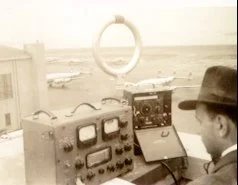 I was feeling smug about my version of the ET-1/FETer single FET transceiver. I built the transmit portion of the rig this morning, and it fired right up, producing a nice clean CW signal. But then news came in of the historic 100 mile QSO between Michael, AA1TJ, and Seab, AA1MY. Michael was using his new Mikums rig, an 80 meter transceiver built around one tunnel diode. My FET rig seems like a QRO appliance in comparison to the Mikums. Michael's diode rig was putting out 160 micro watts. Yes, 160 uW. Congratulations to Mike and Seab. I'm sure Mike would not mind my sharing his e-mail on this subject (see below). Reading it, you can just feel the excitement that came from this historic contact. I'm sure tunnel diode inventor Leo Esaki (pictured above) would be pleased.
I was feeling smug about my version of the ET-1/FETer single FET transceiver. I built the transmit portion of the rig this morning, and it fired right up, producing a nice clean CW signal. But then news came in of the historic 100 mile QSO between Michael, AA1TJ, and Seab, AA1MY. Michael was using his new Mikums rig, an 80 meter transceiver built around one tunnel diode. My FET rig seems like a QRO appliance in comparison to the Mikums. Michael's diode rig was putting out 160 micro watts. Yes, 160 uW. Congratulations to Mike and Seab. I'm sure Mike would not mind my sharing his e-mail on this subject (see below). Reading it, you can just feel the excitement that came from this historic contact. I'm sure tunnel diode inventor Leo Esaki (pictured above) would be pleased.Be sure to check out Michael's description of the rig:
http://mjrainey.googlepages.com/mikums
Also, don't miss the pages on Reginald Fessenden:
http://www.newsm.org/Wireless/Fessenden/Fessenden.html
Friends,
Seab, AA1MY sent me a message just over an hour ago saying that he suddenly began hearing my Mikums transceiver running as a beacon! Seab lives in Bethel, Maine, an air distance of exactly 100miles/160km from my QTH. A few hours earlier I'd measured Mikums' output power at 169uW (yes, microWatts!).
I was at the computer when his message appeared so I quickly called him on the telephone. He said that he'd been monitoring while he was busy with some paperwork. He'd just returned from fetching a load of firewood and all of a sudden there I was! He put the phone near his loudspeaker and I just about fell over! I was weak, but perfectly readable.
Then I practically hung-up on the poor fellow in order to race down to my shack in order to try for a QSO. I heard him clear as a bell at a power of 40w (I reported 459, but I ought to have sent 559). He confirmed my report and then dropped down to 4w. Although weak, I easily copied his 429 report to me. I gave him a 219, which he confirmed.
Oh boy...it's done. We made a skywave QSO using a one-tunnel diode transceiver. I'm practically giddy here :o)
Many thanks to Jim, W1PID, who has patiently listened for several days. In fact, Jim has copied my CQ and callsign several times before my signal evaporated on a breeze of QSB. In return, I copied Jim's Small Wonders Labs DSW at 2w on Mikums with no problem the other day. Again, many thanks, OM. The next time we meet, I'm buying, okay?
Again, way to go Seab; that's one small step for man....naw, more like one more exciting and thoughly useless (ain't it great!) milestone in the history of QRP :o)
73/72's all around,
Mike, AA1TJ


.JPG)




